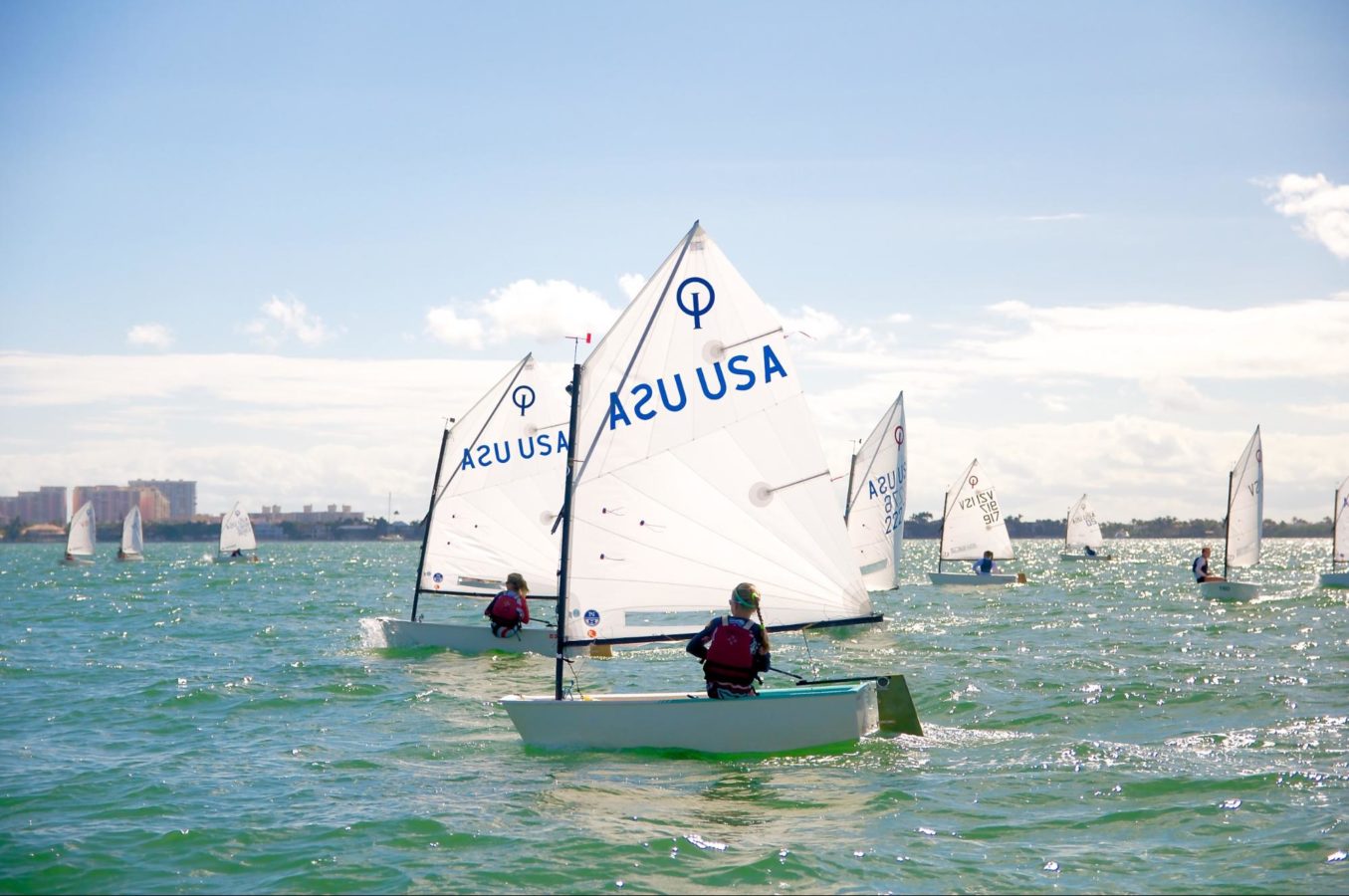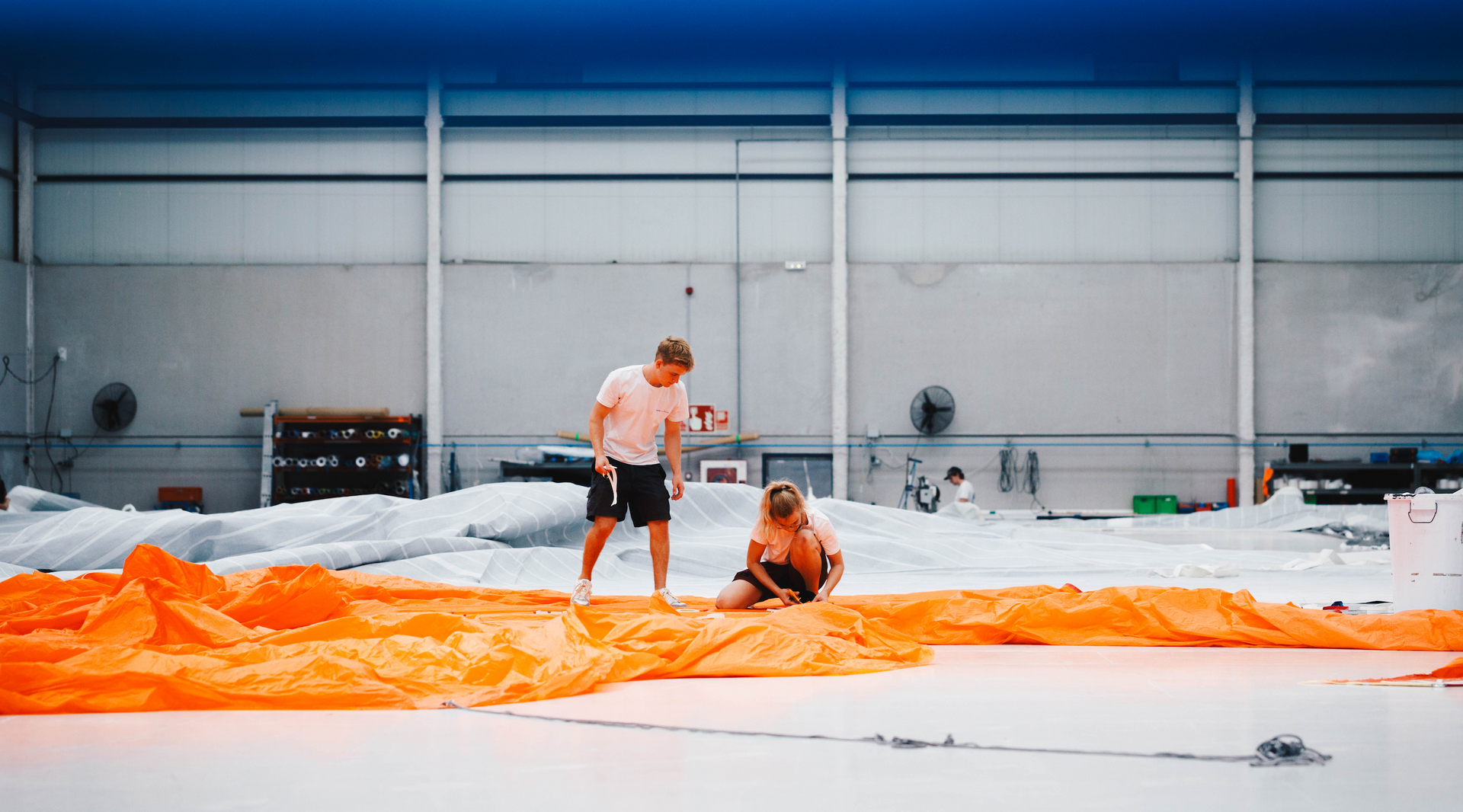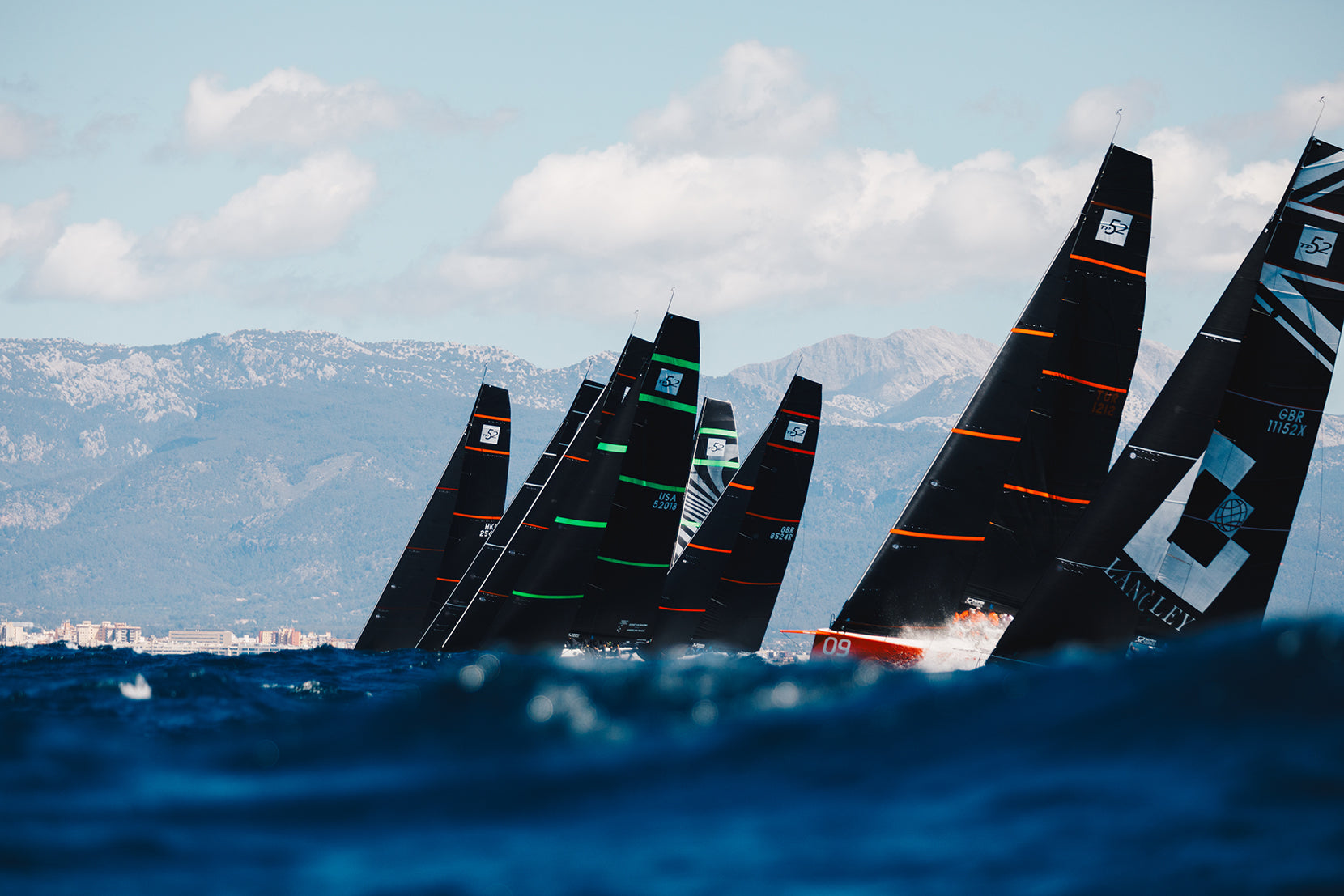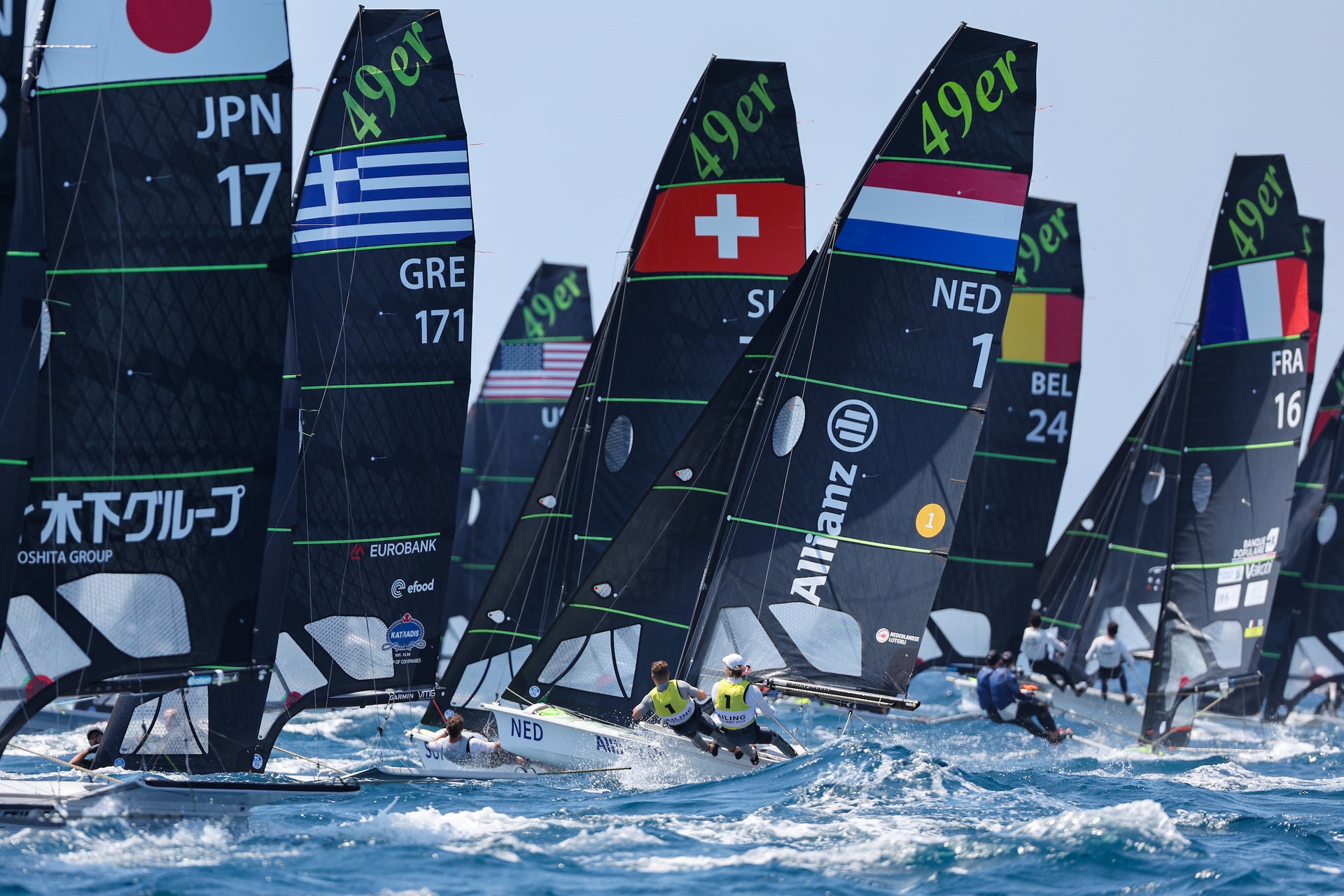OPTIMIST R&D
Sail Designer Mike Marshall Explains His Fun Challenge
Making the square-bowed Optimist go fast requires a different thought process, North Sails expert and J/22 World Champion Mike Marshall explains. “It’s not just about tightening sprit tension until the wrinkles are gone,” he says. “That closes off the leech too much. I think of sprit tension like a halyard.” Just as you might want wrinkles in a mainsail luff on a triangular sail, sometimes it’s best to have wrinkles perpendicular to your Optimist sprit.
“In previous crosscut designs, the head was too flat,” Mike continues. “The new design is a hybrid radial, with a radial tack and clew, kind of like a jib. The deeper you go in the head, the less the sprit tension matters. The sail becomes self-adjusting to cover a wider range of conditions.”
When it’s light and sailors are sitting in the boat, wrinkles allow the leech to open “so that you’re not just having the leech shut down the whole time. You can be higher, same speed.” As the breeze comes up, tensioning the sprit closes down the leech. “When you’re pressing the rail, fully hiked, anything you can do to shut the leech down is just extra height without any loss in speed.”

According to Mike, the Opti is a bit strange. “You’ve got one sail that goes through this entire wide range, and you don’t have a cunningham. You’ve got a vang, which, frankly, doesn’t do anything. You’ve got an outhaul, which is relatively useful. So, the major usable controls are the outhaul and the sprit, with the sprit being the biggest driver of sail shape.”
When not designing sails, Mike coaches youth sailors; he says most coaches need to do a better job of explaining what sprit tension does to sail shape. “Not a lot of coaches ever say to their kids, ‘The sprit is your biggest driver of how your sail is going to be trimmed.’ They would just focus on getting the mainsheet and other stuff correct. When they focus on the sprit, they say, ‘Make the wrinkle go away’ instead of, ‘Look up the leech. When you trim it in, do you want it to be more open or more closed?’”
To design the new Opti sail, Mike says it was important to get away from his computer and out on the water to see “what was actually going on with the sail. Making it deeper in the head made sprit tension less important, and made the sail more self-adjusting.” Now he’s excited to see his theoretical shape in use by the top Opti sailors in the world (and to visit Lake Garda for the first time).

“The thing about the Opti is that, at the end of the day, it’s main-sheeted to a single point in the bottom of the boat. So, the harder you trim the main, the more it comes center line instead of just closing the leech. When you trim to the corner of the boat in light air, the leech might be too open. In breeze, you’d rather have the leech closed, but you can’t do that with the boom over the corner of the boat with a single-point mainsheet. So, in theory, you’d love to have a bridle to keep the boom over the leeward corner of the boat while maintaining leech tension.”
“That’s why the sprit is a super valuable control,” he continues. “If you want the boom to be out farther with the same leech tension, put more sprit tension on to close the top.”
And that’s why it’s helpful to compare the Opti sail to a jib rather than a traditional main, Mike says. “If you pull on more jib halyard, the head closes and you can ease the sheet and get a more vertical leech profile. If you ease the halyard down—ease the sprit down—the leech profile twists off and you can trim it in closer on the foot without closing the top.”
Like all designers, Mike is always excited to make a shape even better, but he says for now he’s satisfied with the new sail’s performance. “You’ve got one sail that goes through the entire wide range now. We’re pretty happy with it as it is.” It’s already received good reviews from coaches, he adds, before reminding sailors: “The sprit is really adding leech tension. When you pull a sprit on, it tightens the leech.” Grinning, he adds, “It’s a fun design challenge.”



























